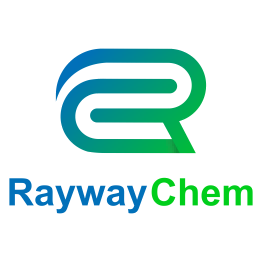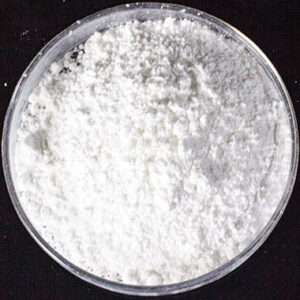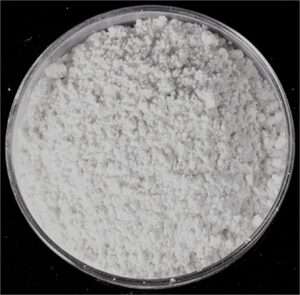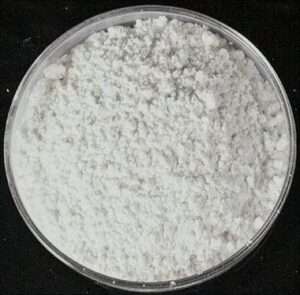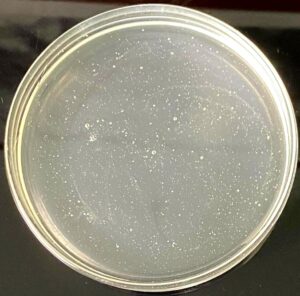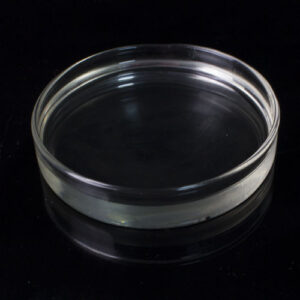Rubber Accelerator List
Rubber Accelerators-Sulfenamides
Subsulfonamide accelerators are the fastest-growing accelerators at present. The length of scorch time and the speed of vulcanization of sub-sulfonamide accelerators depend on the nature of the amine in the accelerator molecule. The stronger the alkalinity of the amine, the faster the vulcanization speed; the greater the spatial obstruction of the amine, the longer the scorching time, and the sulfur speed decreases.
It is a kind of late-acting accelerator derived from 2-mercaptobenzothiazole (accelerator M) as the parent. Compared with thiazole accelerators, the cooking time is long, the processing safety is high, and the physical and mechanical properties of vulcanized rubber and ageing resistance are outstanding, so it is one of the types of rubber accelerators with the largest production and consumption, the most varieties and the widest application. The main varieties include N-tert-butyl-2-benzothiazole subsulfonamide (NS), N-cyclohexyl-2-benzothiazole subsulfonamide (CZ), N, N; dicyclohexyl-2-benzothiazole subsulfonamide (DZ), N-oxydiethylidene-2-benzothiazole subsulfonamide (NOBS) and N-oxydiethylidene-thiocarbamoyl-N´-oxydiethylidene-subsulfonamide (OTOS), etc.
Sulfenamides accelerators mainly include CBS(CZ), TBBS(NS), NOBS(MBS), MBD
-

RAYWAY™ Rubber Accelerator DCBS(DZ)
View More -
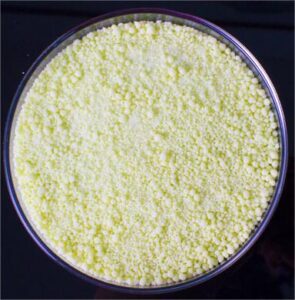
RAYWAY™ Rubber Accelerator NOBS(MBS)
View More -
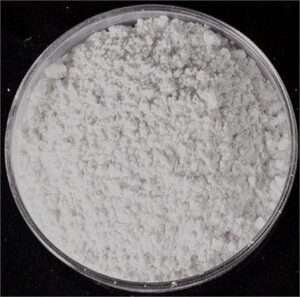
RAYWAY™ Rubber Accelerator TBBS(NS)
View More -

RAYWAY™ Rubber Accelerator CBS(CZ)
View More
RAYWAY™ Rubber Accelerator CBS(CZ)

High speed vulcanization accelerator without rubber dyeing. Suitable for NR, IR, BR, SBR, NBR, EPDM and latex. When used in dry rubber, it has the same properties as MBT and has excellent resistance to scorching. Mildly active in latex systems and often used in combination with super accelerators. High critical vulcanization temperature (138°C). Less prone to early vulcanization and wider flatness of vulcanization. Suitable for latex systems with the function of regulating the viscosity of the system. Suitable for injection molding and foam rubber products. Safe operation, easy dispersion, no pollution, no discoloration. Aging resistance when used with TP. Mainly used in the manufacture of tires, hoses, rubber shoes, rubber cloth and other general industrial products.
RAYWAY™ Rubber Accelerator TBBS(NS)
It is a post-effective accelerator for natural rubber, paraben rubber, isoamyl rubber, butyl rubber and recycled rubber, especially for carbon black rubber containing strong alkali. It is safe at operating temperature, with strong anti-scorch, fast curing speed, and high tensile strength, and can improve the use ratio of synthetic rubber. With low toxicity and high efficiency, it is an ideal substitute for NOBS, with excellent overall performance, and is known as the standard accelerator. It is widely used in the production of radial tires. It can be used with aldehyde amine, guanidine, and thiram accelerators, and when used with anti-coke agent PVI, it forms a good vulcanization system. It is mainly used in the manufacture and production of tires, rubber shoes, rubber tubes, tapes and cables.
RAYWAY™ Rubber Accelerator NOBS(MBS)
It is post-effective vulcanization accelerator with small activity, large receding delay, short vulcanization time, excellent anti-scorching performance, safe processing, easy dispersion, no frosting, and slight discolouration, and is suitable for natural rubber and synthetic rubber. It is mainly used in the manufacture of industrial rubber products such as tires, hoses, rubber shoes and transportation belts.
RAYWAY™ Rubber Accelerator MBD
This product is used as an after-effect accelerator for rubber and also as a vulcanizing agent and can be used in NR, IR, BR, SBR, NBR, and EPDM. As a vulcanizing agent, it is similar to TMTD use and can be used for sulfur-free yellow vulcanization. The physical properties and ageing resistance of vulcanization are basically no different from TMTD, and there is no need to worry about premature vulcanization compared with TMTD.
Rubber Accelerators-Thiurams
The thiuram-type accelerator is a widely used vulcanization accelerator in rubber products. It includes monosulfide, disulfide and polysulfide. Among them, the disulfide and polysulfide thiuram are easy to release active sulfur under the conventional vulcanization temperature, so the rubber can be vulcanized without adding sulfur yellow, which is called "sulfur-free vulcanization". The vulcanization accelerator with disulfide thiuram is mostly used as Tetramethyl Thiuram Disulfide (TMTD), Tetraethyl Thiuram Disulfide (TETD), etc. Tetra-methyl thiuram monosulfide (TMTM) and tetramethyl thiuram disulfide (TMTD) are good-performance vulcanization accelerators for rubber, but in recent years, it has been found that they produce amine nitrite during vulcanization, so new types of vulcanization accelerators with better performance and no carcinogenic substances are actively developed. Tetrabenzyl thiuram disulfide (TBzTD) is one of the rubber accelerator thiuram products, which is an efficient and green vulcanization accelerator suitable for natural rubber, p-butyl rubber, isoamyl rubber, butadiene rubber, nitrile rubber, butyl rubber, EPDM rubber and latex, its vulcanization promotion effect is similar to TMTD, the vulcanization speed is slightly inferior to TMTD, but the stability is better than TMTD, and it is widely used in the manufacture of wire and cable, tires, tapes It is widely used in the manufacture of wire and cable, tire, tape, colouring transparent products, footwear, heat-resistant products, etc. It does not produce carcinogenic nitrosamines and is a green, safe, environmentally friendly and efficient rubber vulcanization accelerator, which can replace TMTD, and TETD, with better processing safety and longer scorching time. TBzTD has a large molecular weight, and a high melting point and is not easy to decompose, so it does not produce carcinogenic nitrosamines and has become a new type of vulcanization accelerator with great development potential. TiBTM is a multi-functional and environment-friendly new type of accelerator with the performance of both a rubber vulcanization accelerator and an anti-coke agent, and it is the best substitute for TMTM (tetramethyl thiuram monosulfide). In the SBR/natural rubber system, when TiBTM and CTP are used with TBBS and CBS respectively, the two anti-coking agents have the same degree of delay in coking, and TiBTM can also make the vulcanization speed significantly faster, while CTP can sometimes cause a decrease in vulcanization speed. In natural rubber, the anti-coking effect of CTP is better than TiBTM, but TiBTM can increase the resistance of the rubber to vulcanization reversion, TiBTM is mainly used as a co-promoter. For SBR or natural rubber, either increasing the vulcanization temperature, changing the amount of sulfur or adding silica will not affect the performance of TiBTM which can both increase the scorch safety and vulcanization rate, and the use of accelerator TiBTM has no adverse effect on the physical properties of vulcanized rubber.
Thiurams accelerators mainly include TMTD(TT), TETD, TBTD, TMTM(TS), TiBTD,
TBzTD, DPTT, TiBTM,
-

RAYWAY™ Rubber Accelerator TBzTD
View More -
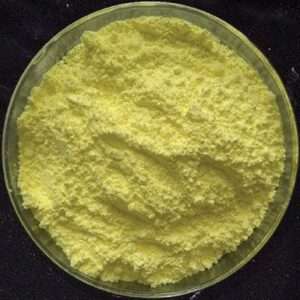
RAYWAY™ Rubber Accelerator TiBTM
View More -
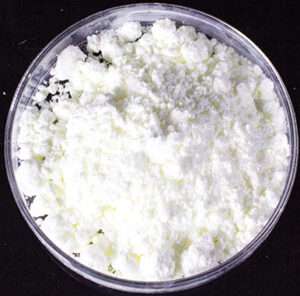
RAYWAY™ Rubber Accelerator TiBTD
View More -
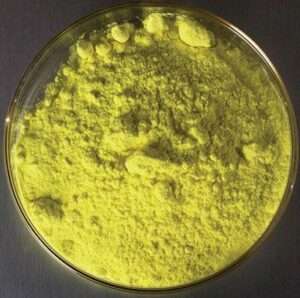
RAYWAY™ Rubber Accelerator TMTM(TS)
View More
RAYWAY™ Rubber Accelerator TMTD(TT)
It is used as super vulcanization accelerator in rubber industry, often used with thiazole accelerator, also can be used with other accelerators as accelerator for continuous rubber material. It can be used as vulcanizing agent because free sulfur is slowly decomposed above 100℃. The aging resistance and heat resistance of the products are very good. It is suitable for natural rubber and synthetic rubber. It is mainly used in the manufacture of tires, inner tubes, rubber shoes, cables and other industrial products. It is used as fungicide and insecticide in agriculture, and also used as lubricant additive.
RAYWAY™ Rubber Accelerator TETD
Super accelerator and vulcanizing agent for natural rubber, butadiene rubber, nitrile rubber, butyl rubber, paraben rubber and latex. The effective sulfur content is 11% of its quality. This product is an excellent second accelerator for thiazole accelerators, and it is also catalytic to acid and guanidine accelerators, easy to disperse in rubber, has no pollution, no discolouration, and this product can also act as a fungicide, insecticide, pharmaceutical intermediate, etc. Usually used in the manufacture of cables, rubber cloth, rubber shoes, inner tubes, bright-coloured products, etc.
RAYWAY™ Rubber Accelerator TBTD
Super accelerator for natural rubber and synthetic rubber. It can also be used as vulcanizing agent, and the effective sulfur content is 7.5%. The product is not sprayed in the rubber material, has no pollution, and can be used in the manufacture of inner tubes, rubber shoes, rubber cloth, industrial products, etc. The dosage is 0.2-1.0 when it is used as an accelerator in natural rubber or synthetic rubber, and the dosage is 2.0-6.0 when it is used as a vulcanizing agent.
RAYWAY™ Rubber Accelerator TMTM(TS)
This product is a non-discoloured, non-polluting super accelerator, mainly used for natural rubber and synthetic rubber. The activity is about 10% lower than that of TMTD, and the tensile strength of vulcanized rubber is also slightly lower. Vulcanization critical temperature 121 ℃ after-effective than disulfide Tyuram and dithiocarbamate accelerator are large, excellent anti-scorching performance. The dosage of sulfur yellow is larger when using this product. This product can be used alone or with thiazole, aldehyde amine, guanidine and other accelerators, and is the active agent of a thiazole accelerator. It has the effect of delayed vulcanization in general-purpose butyl rubber. When used with dithiocarbamate in latex, it can reduce the tendency of early vulcanization of rubber. This product cannot decompose active sulfur and cannot be used in sulfur-free fits.
RAYWAY™ Rubber Accelerator TiBTD
Super fast accelerator, no rubber dyeing property. Suitable for NR, IR, BR, SBR, IIR, NBR and EPDM. performance similar to TT, TETD, but low foaming and scorching properties. Good vulcanization performance but low strength. It has high vulcanization effect even without sulfur and is heat resistant, non-foaming, and has high compression resistance.
RAYWAY™ Rubber Accelerator TBzTD
This product is developed to replace thiuram-type accelerators such as TMTD, mainly because thiuram-type accelerators are prone to produce carcinogenic nitrosamines, while diphenylnitrosamines are not carcinogenic. It can be used in NR, SBR, EPDM, NBR systems as a fast primary accelerator or secondary accelerator, which is safer than TMTD and has a longer anti-coke time, and is sometimes used as PVC rubber vulcanization inhibitor.
RAYWAY™ Rubber Accelerator DPTT
It is used as an auxiliary accelerator for natural rubber, synthetic rubber and latex. It can also be used as vulcanizing agent because free sulfur can be decomposed when heated. When used as vulcanizing agent, it is safe at operating temperature, and the vulcanized rubber has excellent heat and aging resistance. It can be used as the main accelerator in chlorosulfonated polyethylene rubber, styrene-butadiene rubber and butyl rubber. It is especially suitable for nitrile rubber when used with thiazole accelerator, and the compression deformation and heat resistance of vulcanized rubber are excellent. It is suitable to be used with accelerator MZ when making latex sponge. It is easy to disperse in dry rubber and in water. No pollution. Generally used in the manufacture of heat-resistant products, cables, etc.
RAYWAY™ Rubber Accelerator TiBTM
Rubber vulcanization accelerator TiBTM is a green and environmentally friendly rubber vulcanization accelerator, which is a substitute for TMTM and does not produce carcinogenic ammonium nitrite. It is a multi-functional accelerator with both the role of secondary sulfonamide accelerator and the performance of anti-coking agent, which is widely used in the vulcanization process of natural rubber, isoprene rubber, styrene-butadiene rubber, butadiene rubber, EPDM rubber and nitrile rubber, etc.
Rubber Accelerators--Dithiocarbamates
Dithiocarbamate accelerator is a super-super speed grade accelerator. Low activity temperature, fast vulcanization speed, high cross-linking degree. However, it is easy to scorch, has poor flatness, improper vulcanization operation, and is easy to cause under-sulfuration or over-sulfuration. Suitable for fast vulcanization of thin products, room temperature vulcanization products, latex products and butyl rubber, EPDM rubber sulfur yellow vulcanization products. The highest activity of such an accelerator is ammonium salt, followed by sodium salt and potassium salt, which are water-soluble accelerators for latex products. These three types of salts are not suitable for dry rubber production because of their high activity, poor anti-scorch and flatness. Dithiocarbamate derivatives are used as vulcanization accelerators. Usually obtained by the reaction of carbon disulfide, secondary amines and organic or inorganic bases. It is an acid accelerator with high activity and is known as a super accelerator. Generally used for fast vulcanization and low-temperature vulcanization products. Among them, ammonium dithiocarbamate, sodium and potassium are water-soluble accelerators, mostly used as vulcanization accelerators for latex products; zinc dithiocarbamate has lower promotional activity than ammonium salts, and has certain operational safety in dry rubber, and has a strong activation effect on thiazole, thiuram and latex ammonium dithiocarbamate, sodium and potassium accelerators, which are also the most commonly used varieties of dithiocarbamate accelerators. The main varieties include zinc dimethyl dithiocarbamate (PZ), zinc diethyl dithiocarbamate (ZDC), zinc dibutyl dithiocarbamate (BZ), zinc ethyl phenyl dithiocarbamate (PX), etc.
Thiurams accelerators mainly include ZDC (ZDEC,EZ), ZDMC(PZ), ZDBC (BZ), PX, ZDIBC(IBZ), ZBEC(ZBDC ZTC)
-
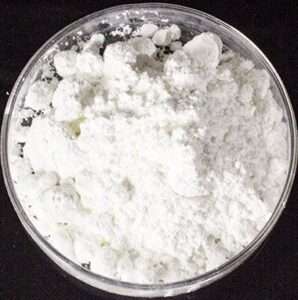
RAYWAY™ Rubber Accelerator ZDMC(PZ)
View More -
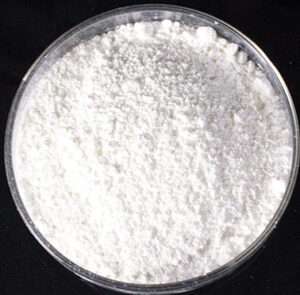
RAYWAY™ Rubber Accelerator ZEPC(PX)
View More -
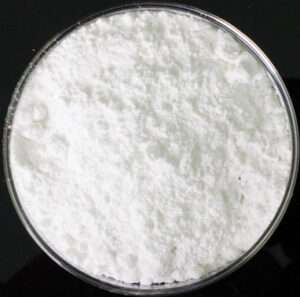
RAYWAY™ Rubber Accelerator ZDBC(BZ)
View More -

RAYWAY™ Rubber Accelerator ZBEC(ZTC)
View More -
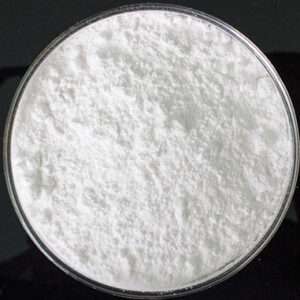
RAYWAY™ Rubber Accelerator ZDEC(EZ)
View More
RAYWAY™ Rubber Accelerator ZDC (ZDEC,EZ)
It is used as a super accelerator for natural rubber and various synthetic rubber is a representative variety of zinc dithiocarbamate accelerator and is also a general accelerator for latex. It is a good active agent for thiazole and hyposulfonamide accelerators. It is also used as a non-water-soluble promoter for latex and has little effect on the stability of the latex. It is non-polluting, non-discoloured, odourless, tasteless and non-toxic, suitable for white and bright-coloured products and transparent products. It is mainly used in the manufacture of medical products, adhesive tape and self-vulcanizing products, etc. It is 0.5-1 part in the dry latex material.
RAYWAY™ Rubber Accelerator ZDMC(PZ)
Super accelerator for natural rubber and synthetic rubber and general accelerator for latex. It is especially suitable for butyl rubber and nitrile rubber with excellent ageing resistance which has requirements for compression deformation, and also for EPDM rubber. The vulcanization temperature is 100℃, and the activity is stronger than TMTD, but the activity is stronger at low temperatures, and the tendency of scorching is big, and it is easy to cause early vulcanization when mixing. It has an activation effect on the thiazole subsulfonamide accelerator and can be used as a second accelerator. When used with DM, with the increase in DM dosage, the anti-scorch performance also increases. Since it is tasteless, non-polluting and non-discolouring, it is suitable for rubber products for adhesive tape, food and medicine. In the United States, ZDMC has been approved by FDA. It is effective in EPDM, butyl rubber and other products.
RAYWAY™ Rubber Accelerator ZDBC(BZ)
Super accelerator for natural rubber, synthetic rubber and latex. It is more active in dry rubber than ZDEC. The latex containing this product can be used for a week without early vulcanization, and it is a good activator of the thiazole accelerator. It has the function of antioxidant in the compounding rubber, which can improve the aging resistance of vulcanized rubber, no discolouration, no pollution and easy dispersion.
RAYWAY™ Rubber Accelerator PX
This product is a super accelerator that is relatively safe to operate. When used with accelerator DM, the anti-scorch performance increases. The critical temperature of vulcanization of this product is low, and the activity is higher than that of Tyuram accelerator, and it can be used for the vulcanization of natural rubber, SBR and other types of rubber in the range of 80-125℃. It is especially suitable for the vulcanization of latex and has little effect on the viscosity of latex during storage. Because it is non-polluting, non-discoloured, odourless, tasteless and non-toxic it can be used in the manufacture of food-contact impregnated latex products as well as transparent and bright-coloured products, medical products, latex model products, impregnated products, latex sponge, adhesive cloth, self-vulcanizing paste, etc.
RAYWAY™ Rubber Accelerator ZBEC(ZBDC ZTC)
This product is a very fast main or auxiliary (super) accelerator, suitable for natural rubber and synthetic rubber, in NR and SBR latex this product is also a very fast accelerator, this product is a safe secondary amine dithiocarbamate accelerator, this product is a non-carcinogenic, among all zinc dithiocarbamate accelerators, ZBDC has a long anti-scorch performance, in latex has excellent anti-early vulcanization effect.
RAYWAY™ Rubber Accelerator ZDIBC(IBZ)
This product is developed to replace thiuram-type accelerators such as TMTD, mainly because thiuram-type accelerators are prone to produce carcinogenic nitrosamines, while diphenylnitrosamines are not carcinogenic. It can be used in NR, SBR, EPDM, NBR systems as a fast primary accelerator or secondary accelerator, which is safer than TMTD and has a longer anti-coke time, and is sometimes used as PVC rubber vulcanization inhibitor.
Rubber Accelerators--Thioureas
Thiourea accelerator promotion effectiveness is low and poor resistance to scorching, diene vulcanized rubber has been very little application. But in some special cases, such as the use of thiuram disulfide or polysulfide sulfur to give the body as a vulcanizing agent, it has the efficacy of the active agent; thiourea accelerator is basically a special accelerator for chloroprene rubber, can produce tensile strength, fixed extension stress, reduce permanent deformation and other performance of excellent vulcanization rubber.
Thioureas accelerators mainly include ETU(NA-22), DETU, DPTU, DBTU
RAYWAY™ Rubber Accelerator ETU(NA-22)
It is a special accelerator for chloroprene rubber CH type and W type as well as chloroethane rubber and polyacrylate rubber products. It is used in wire, cable, rubber, pipe tape, rubber shoes, rain shoes, raincoats and other products, also used in fine chemical intermediates, antioxidants, insecticides, fuel drugs and synthetic resins.
RAYWAY™ Rubber Accelerator DETU
This kind of accelerator has low promotion effectiveness and poor anti-scorch performance, so it is rarely used for diene rubber, but in special cases, such as vulcanization with thiuram sulfide and other sulfur yellow giving body, this product has the role of active agent, thiourea accelerator for neoprene vulcanization but unique effectiveness, can produce good tensile strength, hardness, compression permanent deformation and other properties of neoprene vulcanization rubber. Compared with NA-22, this product has faster scorching and vulcanization, but the better flatness of vulcanization. Easy to disperse and no frost spraying. It can be used for high-temperature and high-speed vulcanization, especially for the continuous vulcanization of pressed-out products, and it is also the accelerator for butyl rubber and the vulcanization activator for EPDM rubber. It has an antioxidant effect on natural rubber, neoprene, nitrile rubber and styrene butadiene rubber. It is generally used for manufacturing industrial products, special electric wires, sponge products, etc.
RAYWAY™ Rubber Accelerator DPTU(CA)
This product is used as a fast vulcanization accelerator, the critical temperature of vulcanization is 80℃, and care should be taken to avoid early vulcanization when mixing. The activity is higher when the temperature is above 100℃. The products obtained are tough, with excellent tensile strength and flexural resistance, but the products will be discoloured by light, mainly used in natural latex and neoprene products. It is also used as a heat stabilizer for emulsion polymerization of PVC, especially for soft products, and cannot be used with lead, cadmium and other stabilizers, otherwise, it will lead to discolouration. It is a reagent for medicine, dye intermediates and testing osmium-rhodium products.
RAYWAY™ Rubber Accelerator DBTU
It is a fast vulcanization accelerator for neoprene, with similar performance to ETU and DETU, and is suitable for rubber with lower vulcanization temperature and better physical properties. It has good physical properties. It can also promote the vulcanization of natural rubber, styrene-butadiene rubber, butyl rubber and EPDM rubber. It is also an anti-ozonant for natural rubber, neoprene, nitrile and styrene butadiene rubber. No pollution, no discolouration. It is mainly used in electric wire, industrial products and sponge products, etc.
Rubber Accelerators--Guanidines
The guanidine accelerator is the more used at this stage in the partial alkali accelerator. The natural rubber and styrene-butadiene rubber medium-speed accelerator. When guanidine accelerators are applied independently, the vulcanization development is late, the practical safety factor is large, and the storage reliability of the blended rubber is good, but the vulcanization speed is relatively slow (one time slower than that of sub-sulfur fluorobenzene accelerators). The characteristics of guanidine accelerator vulcanized rubber are increased vulcanization degree, resulting in high strength and high fixed extension ground stress. However, there are many polysulfide bonds and more cyclic compounds in the vulcanized rubber, which makes the vulcanized rubber poorly resistant to high-temperature embrittlement, easy to crack and shrink the deformation. In addition, these accelerators have colour loss and pollution and are not suitable for milky white products. Because of the slow vulcanization speed and poor high-temperature brittleness resistance, guanidine accelerators are generally not applied independently but are used as the second accelerator of thiazoles and sub-sulfur fluorobenzenes. It is used in the production of rubber sheets, shoe soles, bicycle tires, industrial products, thick products, and hard rubber products, and the rubber material with guanidine as the second accelerator is suitable for all vulcanization methods. However, when used as the first accelerator, its vulcanization starting point is so late that it can not be used for warm air vulcanization in general.
Thioureas accelerators mainly include DPG(D), DOTG
RAYWAY™ Rubber Accelerator DPG(D)
Used as a plastic crosslinker, temperature indicator, ore flotation aid, coating aid, polish aid, metal analyzer and building material aid. Used in the manufacture of tyres, rubber sheets, shoe soles, industrial products, hard rubber and thick-walled products. It is also used as a medium-speed accelerator for natural and synthetic adhesives and is commonly used as an active agent for thiazole, thiuram and hypoiodide accelerators, accelerators DM, and TMTD for continuous vulcanisation. The resistance of the second accelerator to ageing vulcanisation of rubber together with the thiazole accelerator is reduced and must be combined with a suitable antioxidant. In neoprene adhesives, the product acts as a plasticiser and plastic solution agent. It is not suitable for white or light-coloured products and for rubber products in contact with foodstuffs.
RAYWAY™ Rubber Accelerator DOTG
It can be used in NR, SNR, IIR, IR, SBR, NBR and CR. The activity is very similar to that of promoter D (diphenyl muscle). Very little activity at operating temperature and very safe to operate. The critical temperature of vulcanization is 141°C. It is very active at the vulcanization temperature, especially above the critical temperature, and the vulcanization flatness is good. It is an important active agent of thiazole and sub-sulfonamide accelerators and has the effect of the super accelerator when used with accelerator M. It is mainly used for thick-walled products, tread rubber, buffer layer, rubber roller cover rubber, etc. The dosage is 0.8-1.5 parts when used as a single accelerator, and 0.1-0.5 parts when used as the second accelerator of thiazole accelerator.
Rubber Accelerators--Dialkylphosphorodithiloate
Dialkylphosphorodithiloate is also means accelerators ZDTP
RAYWAY™ Rubber Accelerator ZDTP
Used as a fast vulcanisation accelerator for natural rubber and EPDM rubber. Care should be taken when improving reversion resistance to achieve a good balance between scorch safety and reversion resistance. Non-frosting and non-discolouring, it can be used in translucent fast vulcanising natural rubber sole formulations. ZDTP has an amine-free structure and can be used in nitrosamines-free vulcanisation systems without causing discolouration and without contamination.
Free Quote
Rubber Accelerator Selection And Application FAQ
①Vulcanized rubber type. Different vulcanized rubber choose different vulcanization management system, different vulcanization management system of course contains different indeed accelerator type pairing.
②Coking performance. The accelerator plays a fundamental role in the scorching time of the rubber (i.e. the time lasting before the hot vulcanization of the rubber starts). Therefore, the accelerator should be selected in order to have a very good scorching time of the rubber, which is effective for the actual operating safety factor of the rubber in the whole process of compounding, injection, pressing out or injection, the flow of the rubber before vulcanization and the adhesion to the textile. Especially in the recent past, in order to improve productivity, production standards have become more stringent and the burn resistance of rubber has become more and more demanding. However, too long scorch time increases the total vulcanization time, which is not only detrimental to labour productivity but also negatively affects the deformation of the mould-free vulcanized product during the entire vulcanization process. The anti-scorch performance of the accelerator is immediately related to the critical pressure of the vulcanization (i.e., the temperature at which the accelerator becomes effective for the entire vulcanization process), where the accelerator activity is not significant; above this temperature, the accelerator is active and fully utilizes its vulcanization effectiveness. Unfortunately, most accelerators do not measure this temperature. When a variety of accelerators are applied in conjunction with each other, the activity of some accelerators suffers suppression, and some accelerators show great activity even below their critical pressure.
③Vulcanization flatness. The accelerator should have an open vulcanization flatness graph in the vulcanization period, that is to say, the performance of vulcanized rubber should not show significant transformation in this period, which is very critical for vulcanized rubber thick products and solid core products. Vulcanized rubber is a quasi-stable state of heat, the surface layer of vulcanized rubber and internal heat conditions are not consistent, open vulcanization flatness is to prevent over-sulfur and to ensure that each part of the product is vulcanized uniformly.
④Harm to the performance of blending and vulcanizing rubber. Accelerator in the vulcanization period to participate in the vulcanization of rubber indoor space porous structure, the structure of the vulcanized rubber, that is, the physics of mechanical equipment performance and embrittlement properties have immediate relevance. Some accelerators have a softening effect on the blended rubber, which increases the plasticity of the rubber and changes the production and processing performance of the rubber. Therefore, the use of accelerators to master this characteristic is necessary.
⑤ Permeability. The accelerator which is not well dispersed in the rubber material must not only have a long mixing time, which will increase the driving power consumption of the machine and equipment but also usually has uneven mixing and uneven vulcanization of the product.
